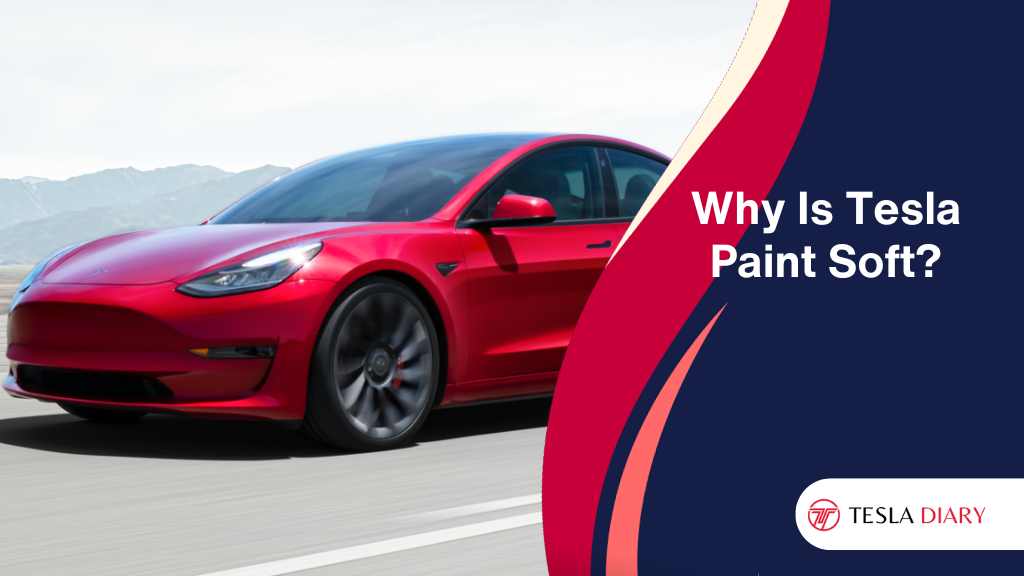When it comes to Tesla vehicles, one of the questions that often arises is whether the paint used on these electric cars is soft.
Paint quality is an important aspect of any vehicle, as it not only affects the car’s appearance but also its durability and resale value.
In this article, we will explore the topic of Tesla paint and why is it soft.
Tesla paint is soft because of the limitations of the use of VOCs and emission guidelines introduced by many states. Tesla can not exceed the legal guidelines and make their car paint hard and it’s true with almost all major car manufacturers.
Also, the biggest selling point of Tesla is being environmentally friendly. If they use all those harmful elements in the paint and cause damage to the environment, it downplays their effort to reduce global warming.
Tesla’s choice to use softer, low-VOC paint aligns with the company’s commitment to sustainability and reducing its environmental impact. By adhering to strict environmental regulations and using eco-friendly paint formulations, Tesla contributes to a cleaner planet and healthier living conditions for all.

The Role of VOCs in Automotive Paint
VOCs are a group of organic chemicals that can easily vaporize into the air. They are commonly found in a variety of everyday products, including paints and coatings.
In the automotive industry, VOCs have traditionally played a crucial role in the composition of car paints. They help to disperse pigments, ensure proper viscosity, and contribute to the drying and curing process of the paint.
However, VOCs have been a major concern due to their negative impact on the environment and human health. When released into the atmosphere, VOCs can contribute to air pollution, smog formation, and even health problems such as respiratory issues.
In response to these concerns, governments around the world have implemented stringent regulations to limit the use of VOCs in various industries, including automotive manufacturing.
Environmental Regulations and Automotive Paint
To comply with environmental regulations and reduce their carbon footprint, many automotive manufacturers have adapted their paint processes.
They have transitioned from traditional solvent-based paints, which contain higher levels of VOCs, to water-based or low-VOC paint formulations.
Tesla, as a leader in sustainable transportation, has been at the forefront of this transition. The company has made a conscious effort to reduce its environmental impact by using paint formulations with lower VOC content.
While this is undoubtedly a commendable step for the planet, it has an unintended consequence: softer paint.
Soft Paint vs. Hard Paint
The softness or hardness of automotive paint is often a topic of discussion among car enthusiasts. Here’s a brief overview of what these terms mean in the context of car paint:
Soft Paint: Paint with a lower VOC content, such as water-based or low-VOC paint, tends to be softer. Soft paint may provide a glossy finish, but it can be more susceptible to minor scratches, chips, and swirl marks.
Hard Paint: Traditional solvent-based paint, which contains higher levels of VOCs, tends to be harder. Hard paint is more resilient against minor damage, making it less prone to scratches and chips. However, it may not achieve the same level of gloss as soft paint.
Caring for Soft Tesla Paint
While Tesla’s soft paint may be more susceptible to minor damage, proper care and maintenance can help preserve its appearance. Here are some tips for caring for your Tesla’s soft paint:
Regular Washing: Wash your Tesla regularly to remove dirt and contaminants that can scratch the paint. Use a high-quality, pH-balanced car wash soap and microfiber towels to minimize the risk of swirl marks.
Paint Protection Films: Consider applying paint protection films to vulnerable areas of your Tesla, such as the front bumper, to shield the paint from stone chips and other road debris.
Ceramic Coatings: Opt for a ceramic coating to provide an extra layer of protection and enhance the paint’s durability and gloss.
Safe Parking: Choose parking spots wisely to avoid exposure to potential hazards, such as tree branches or aggressive parallel parkers.
Conclusion
Tesla’s soft paint is a consequence of the company’s commitment to environmental sustainability and compliance with strict VOC regulations.
While soft paint may require more care to maintain its appearance, it aligns with Tesla’s broader mission to reduce its ecological footprint.
By understanding the reasons behind Tesla’s soft paint and taking proactive measures to protect it, Tesla owners can continue to enjoy the beauty and eco-consciousness of their electric vehicles.

